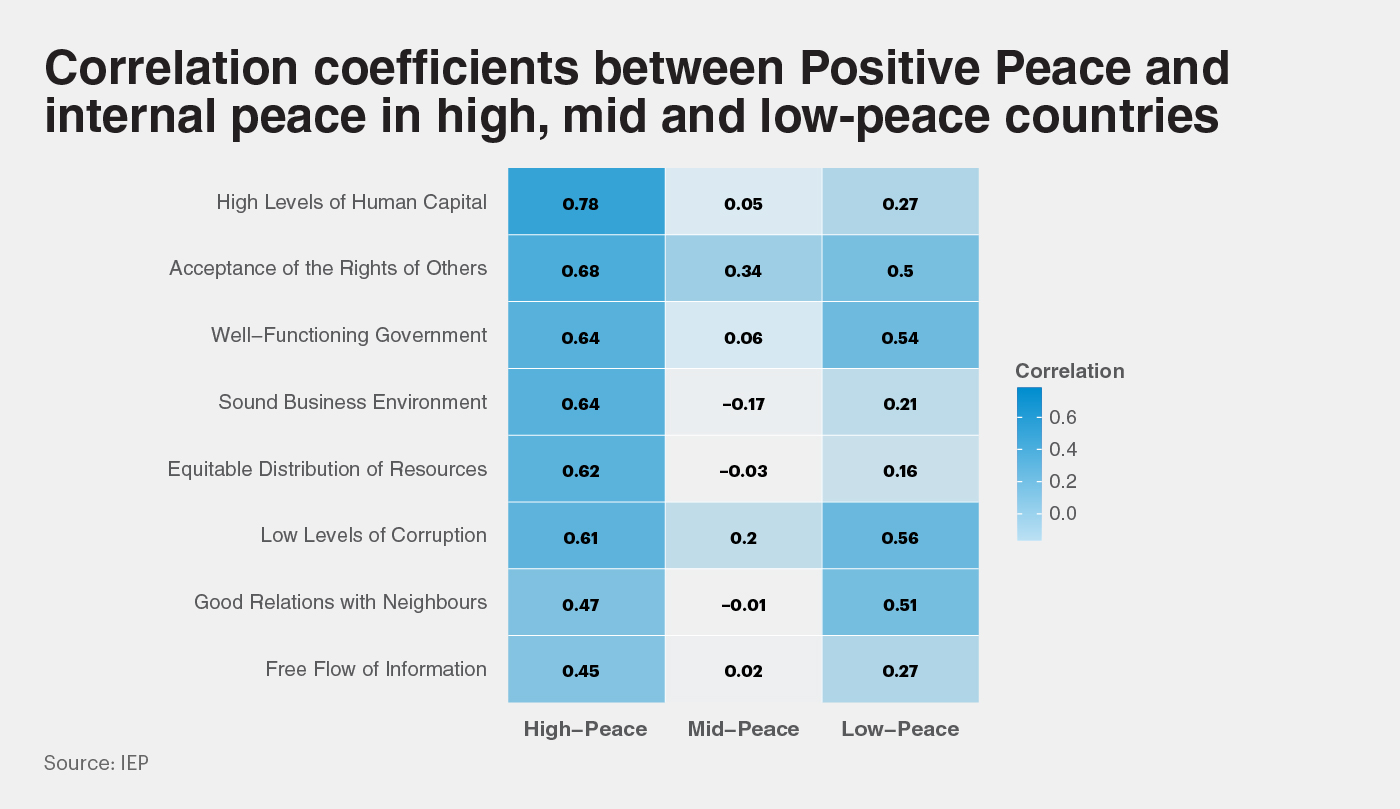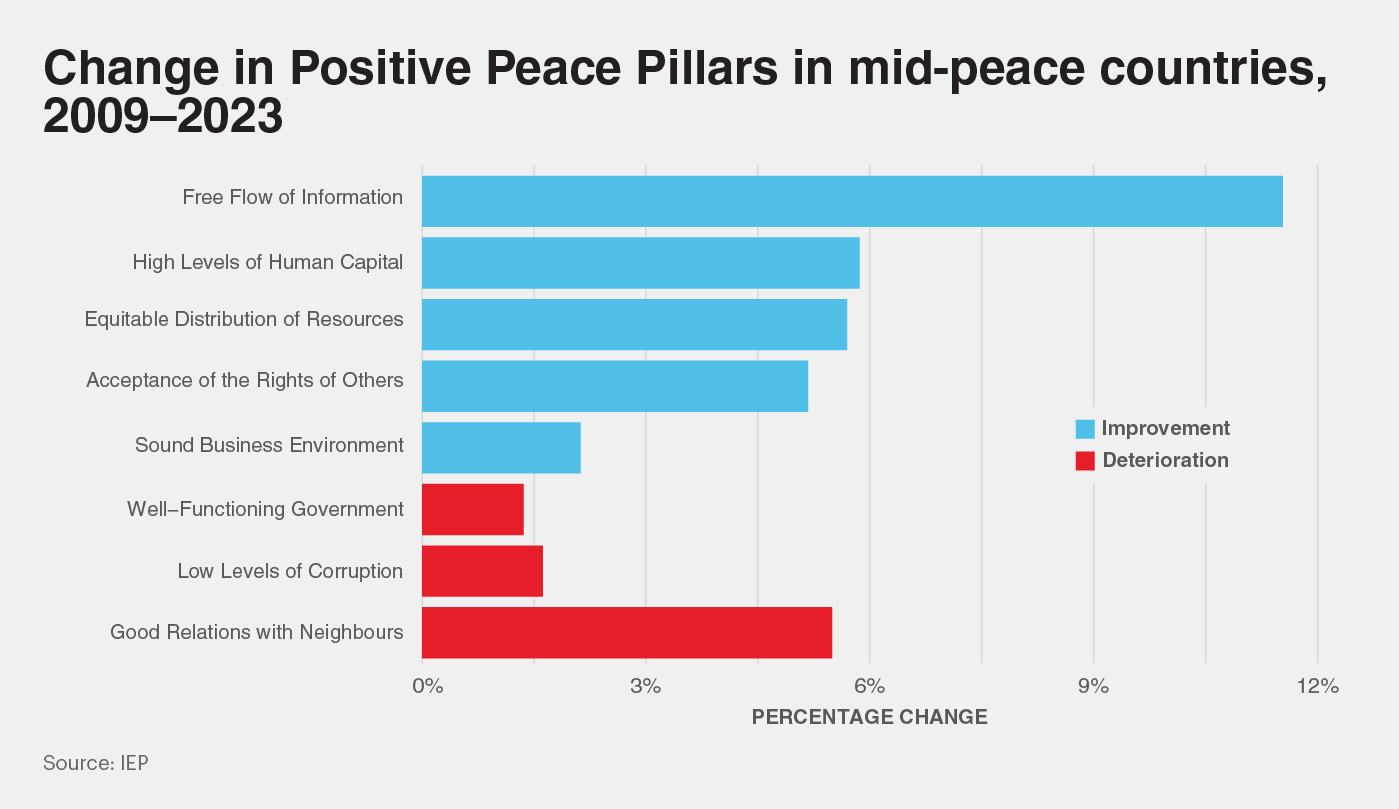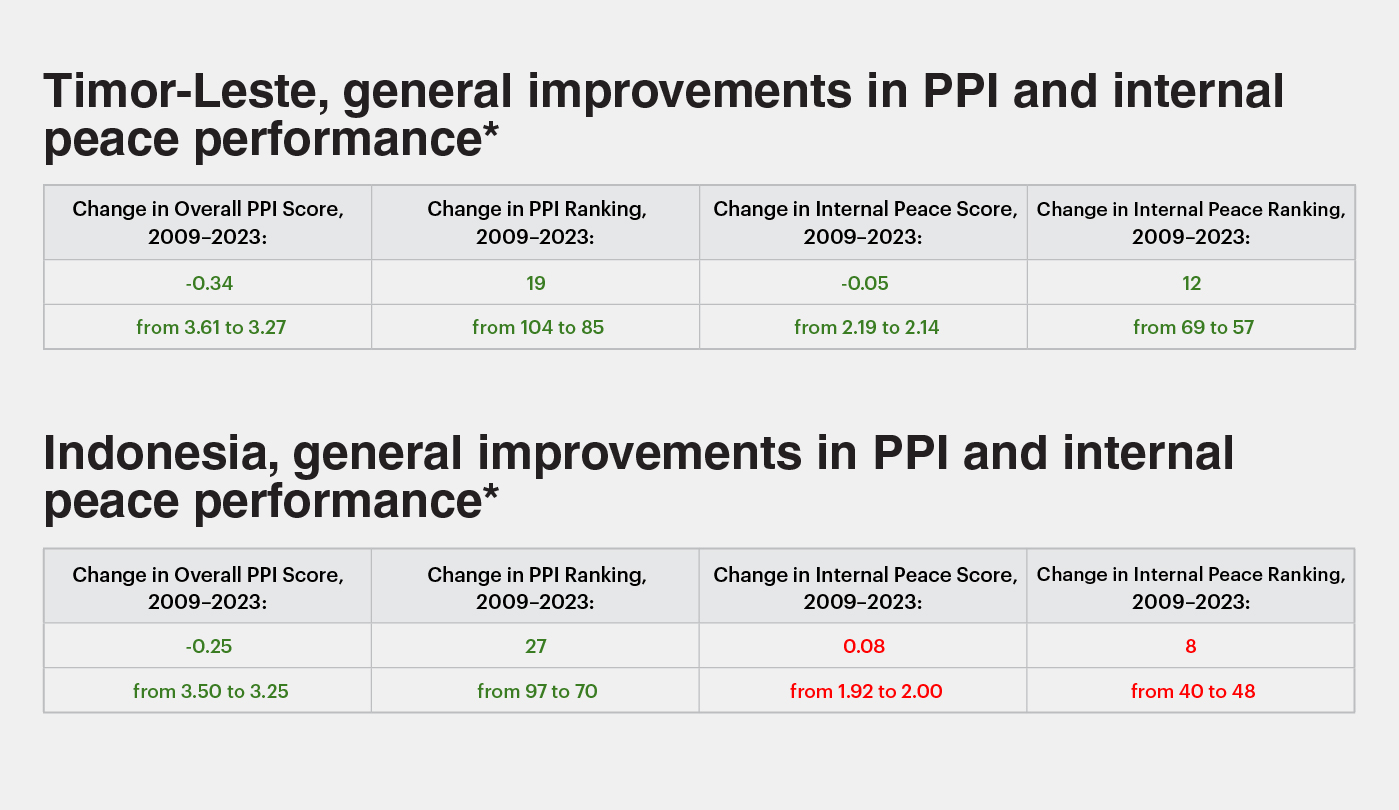The path to peace is proving particularly challenging for countries in the middle range of the Global Peace Index rankings, with these nations showing the largest deterioration in levels of peace since 2008, according to new research from the Institute for Economics & Peace (IEP). These “mid-peace” countries have experienced an average decline in peacefulness of 3.5%, highlighting their impact on the continuing search for global stability.
The findings, published in IEP’s updated Positive Peace Report 2024, reveal that while the most and least peaceful nations show clear patterns in their development, mid-peace countries present a more complex picture that defies conventional analysis and requires a deeper understanding of how the various aspects of society interact.
The analysis reveals a unique phenomenon in mid-peace countries where traditional correlations between peace indicators and outcomes become much weaker. This complexity makes it particularly challenging for policymakers to identify clear pathways to improvement, even as these nations play a crucial role in global stability.

The report’s analysis shows that mid-peace countries often demonstrate an intricate mix of strengths and weaknesses across the eight Pillars of Positive Peace – the attitudes, institutions, and structures that create and sustain peaceful societies. While high-peace countries typically excel across all Pillars and low-peace countries show consistent weakness, mid-peace countries present a more varied pattern that requires careful analysis.
Of particular interest is the finding that certain systemic constraints appear to be holding back broader progress in these nations. The report identifies that Well-Functioning Government, Acceptance of the Rights of Others, and Low Levels of Corruption show particular importance in mid-peace countries – not as standalone solutions, but as current constraints that need to be addressed within the broader system of peacebuilding.
These areas represent points where weakness can constrain progress across the entire system. This is particularly concerning given that two of these areas – Well-Functioning Government and Low Levels of Corruption – have been steadily deteriorating in mid-peace countries since 2009.

The report presents case studies of two countries that have managed to navigate these challenges with some success. Timor-Leste and Indonesia have both shown sustained improvements in government functioning and anti-corruption measures, but their experiences also highlight the complexity of the challenge. Indonesia, despite making progress in several areas, has seen its overall peace ranking decline, demonstrating how improvements in some areas can be undermined if progress isn’t maintained across all pillars.
The Timor-Leste example provides particular insight into how systemic improvement can work. The country’s anti-corruption efforts combined institutional reforms through its Anti-Corruption Commission, with legal enhancements and active civil society involvement. This multi-faceted approach helped create positive feedback loops across different aspects of society.

However, both case studies also reveal the fragility of progress. Timor-Leste faces significant challenges with youth unemployment, while Indonesia continues to struggle with media freedom and growing group grievances. These challenges highlight how weaknesses in any part of the system can create pressure points that threaten overall stability.
Looking forward, the report suggests that mid-peace countries need to take a carefully balanced approach to development. While addressing current constraints is important, this must be done in a way that supports and reinforces progress across all Pillars of Positive Peace. The analysis shows that the most successful transitions occur when improvements in one area help facilitate progress in others, creating positive feedback loops throughout the system.
The evidence demonstrates that the journey from mid-peace to high peace requires a deepened understanding of how different elements of society interact. Success depends not just on addressing directly obvious challenges, but on maintaining balanced progress across all aspects of Positive Peace.
This latest research has significant implications for policymakers and development practitioners working in mid-peace countries. It suggests that while they may need to pay special attention to certain areas, they must always consider how interventions will affect the broader system of peacebuilding. The goal should be to address constraints while maintaining or enhancing progress across all of the Pillars.
The findings also highlight the importance of continued monitoring and adjustment of peace-building strategies. As the experiences of both successful and struggling mid-peace countries show, progress is neither linear nor guaranteed, and maintaining stability requires constant attention to the complex interactions between different aspects of society.